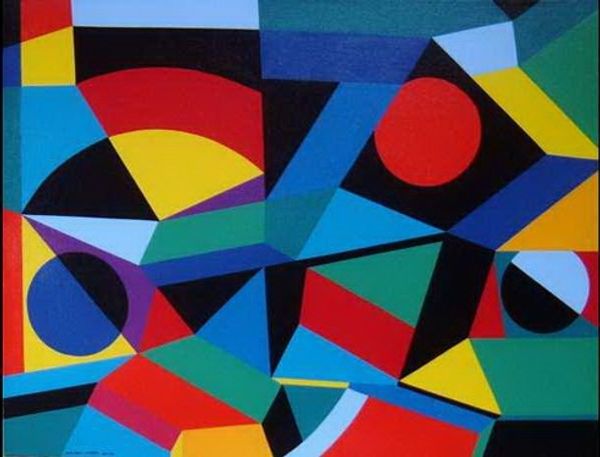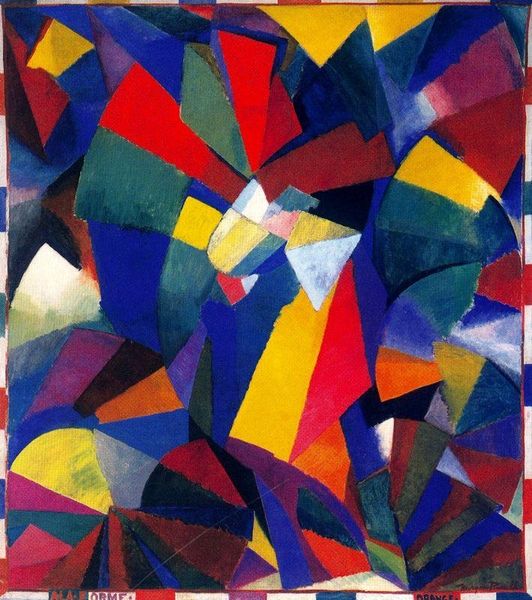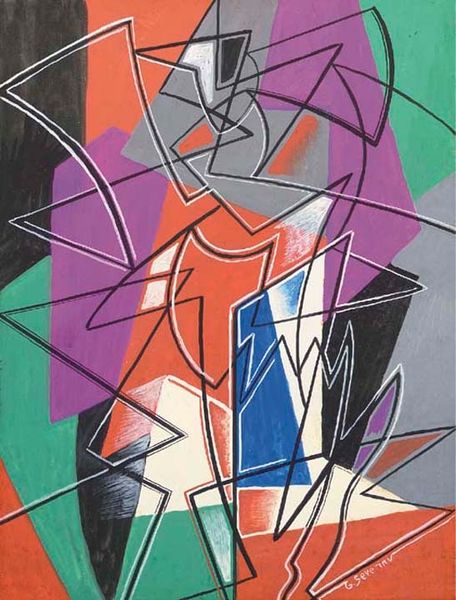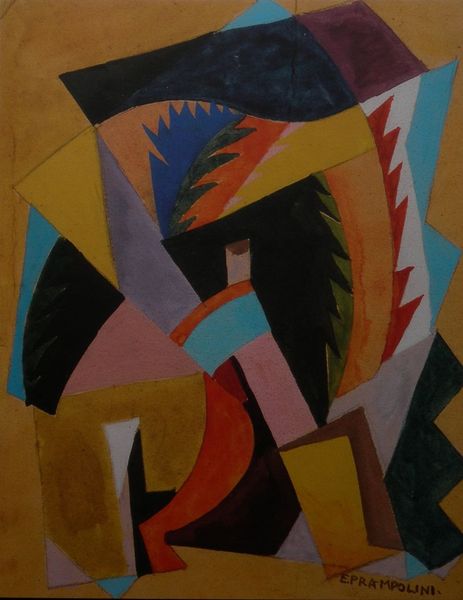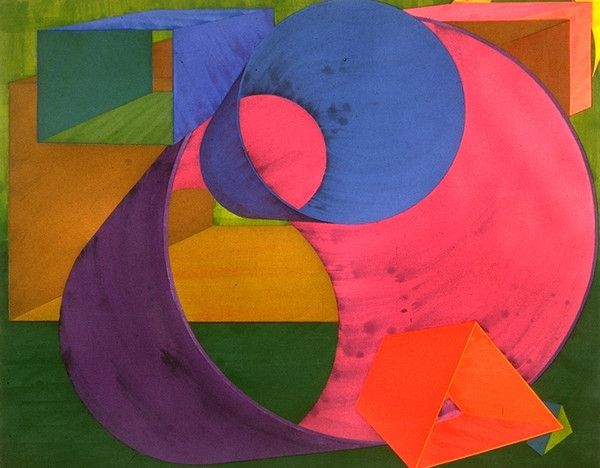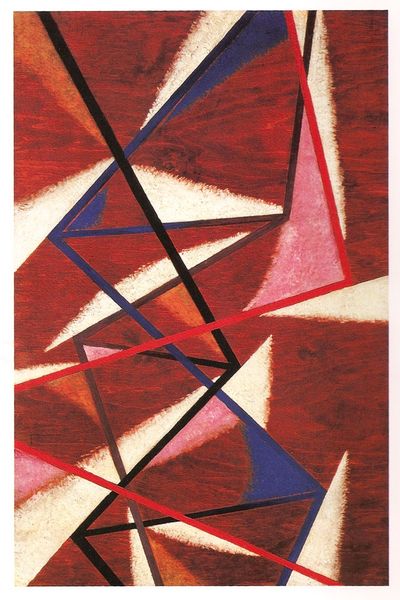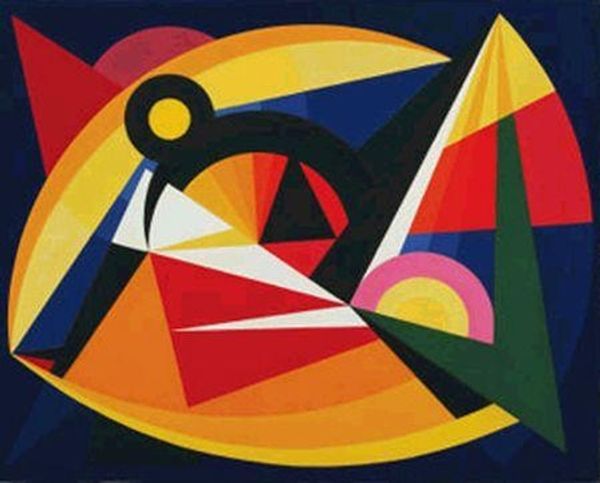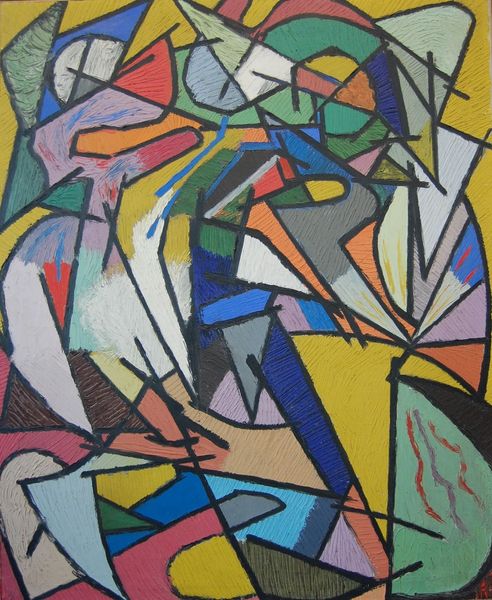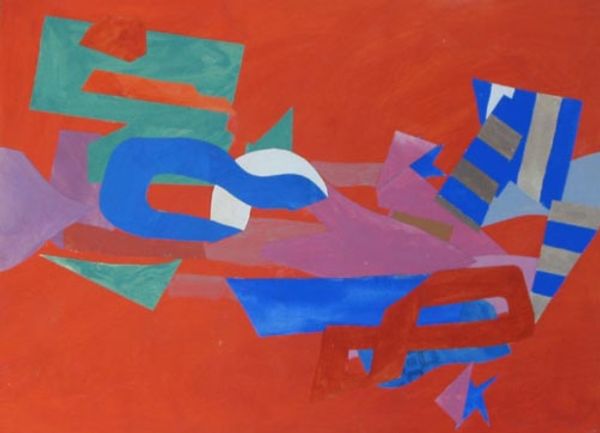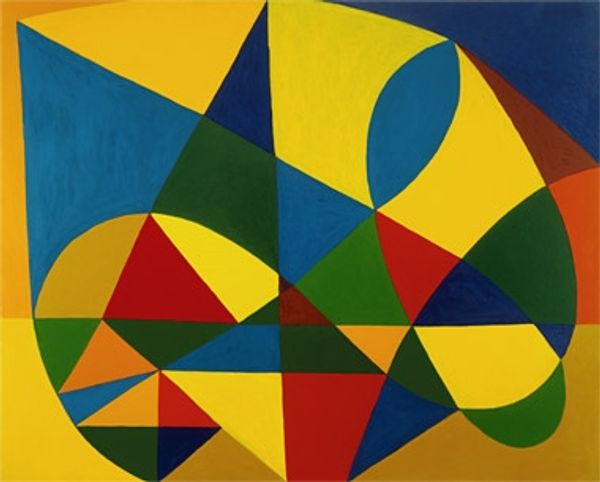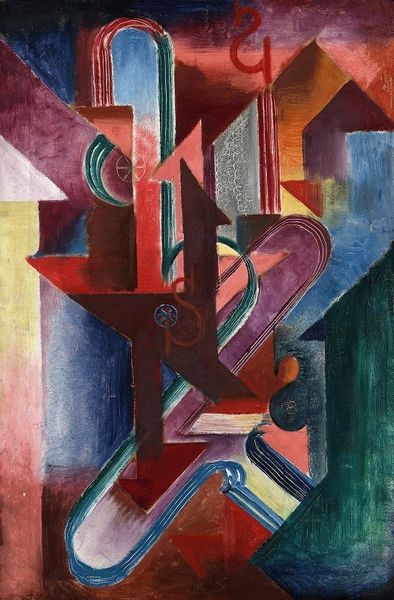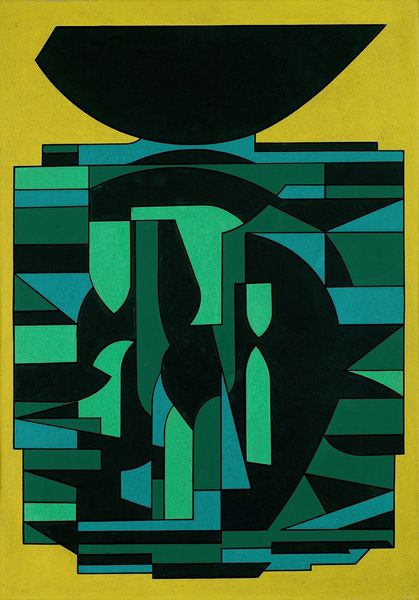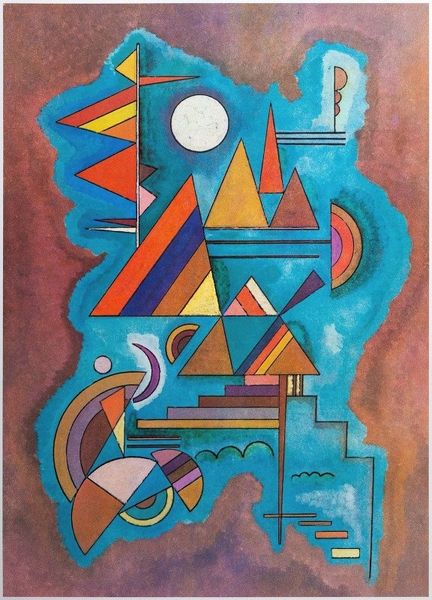
mixed-media, painting, acrylic-paint
#
cubism
#
mixed-media
#
popart
#
painting
#
acrylic-paint
#
geometric
#
geometric-abstraction
#
abstraction
#
modernism
Copyright: Auguste Herbin,Fair Use
Editor: This is "Combat Clair-Obscur" by Auguste Herbin, from 1939. It looks like acrylic paint on canvas, with a fascinating array of geometric shapes. I'm struck by how vibrant the colours are, almost clashing, which maybe contributes to the combat element suggested by the title? What can you tell me about this work? Curator: "Combat Clair-Obscur" indeed presents a vibrant, almost jarring juxtaposition of colours and forms, moving far away from tradition. Think of it not as simply a collection of shapes, but a deliberate arrangement born from specific industrial advancements in pigment production. Consider the title too: 'Combat' speaks of conflict, not just visually but perhaps also Herbin grappling with the shifting landscape of art and its production during the interwar period. How does the texture seem to contribute, given what seems like the very careful application of paint? Editor: I guess, compared to a very textured impressionist painting, the very flat and almost machine-like quality of the surface pushes it even further away from any illusion of depth, or even the artist’s hand being visible. How do you mean grappling with art's production? Curator: Precisely! The evenness of the acrylic disrupts the romantic notion of the artist's unique touch, doesn't it? Consider that artists during this era were keenly aware, and sometimes wary, of the rise of mass production and its impact on artistic creation. Were materials becoming more of the focus, or just a means to an end? Herbin's use of these newly accessible pigments and forms can be interpreted as either a celebration of modern industrial capacity or a commentary on art's changing role in an increasingly mechanized society, depending on how you engage the work itself. What do you think? Editor: That’s interesting! So, rather than just appreciating the visual harmony (or disharmony!) of the artwork, we should consider the socioeconomic conditions which allowed for its production to begin with? And how the mass production of those materials can itself impact artistic meaning. Thanks. I will keep my eye on materials! Curator: Exactly. Looking at how materials were acquired and utilized provides another vital dimension to its understanding. By focusing on production, distribution and consumption, our perception is deepened, making way for fresh understandings.
Comments
No comments
Be the first to comment and join the conversation on the ultimate creative platform.

